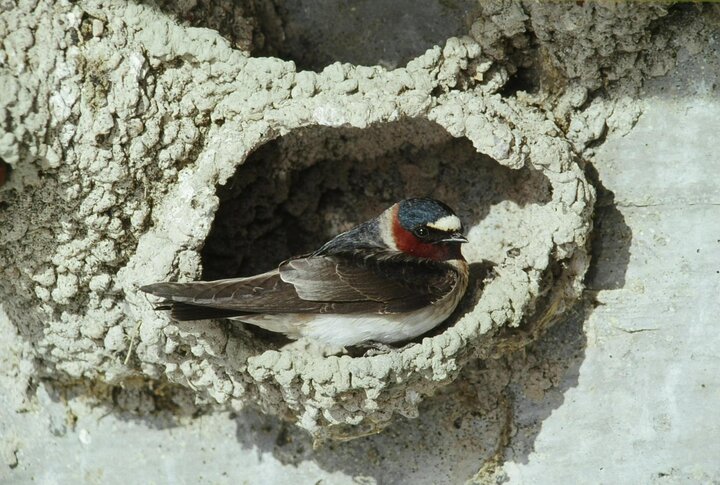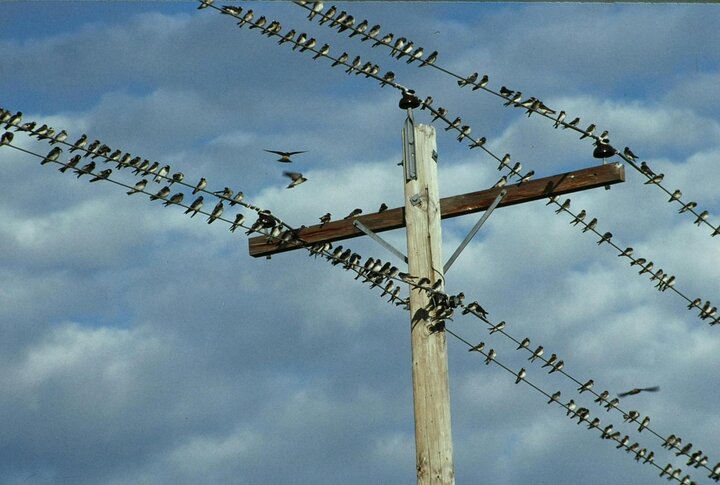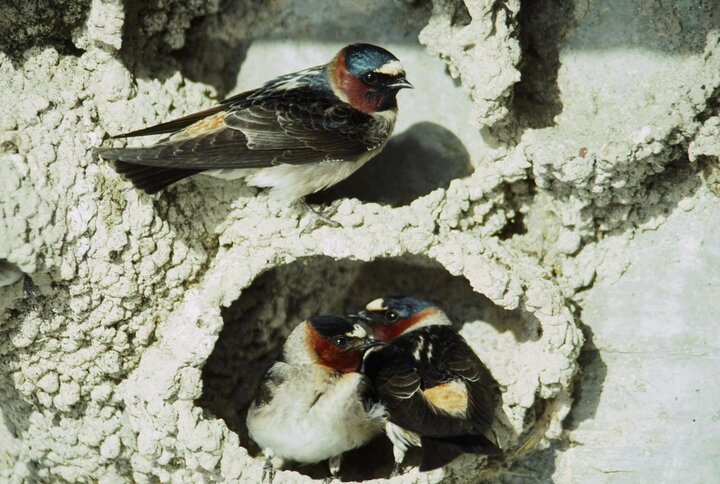What are Cliff Swallows?
Cliff Swallows (Petrochelidon pyrrhonota) are one of the most social land birds in North America and the most social of all the swallows (Class Aves, Family Hirundinidae). They are social in everything they do, nesting in colonies of 2 to 6000 nests (some pairs will nest solitarily), foraging in groups of hundreds to thousands of birds and spending the winter in large aggregations. And, they are one of the best studied species of bird in the world–they are the focus of a research program based in western Nebraska that began in 1982 and continues today. The study began in 1982 and is based at the University of Nebraska's Cedar Point Biological Station in Ogallala (Mary Bomberger Brown and Charles R. Brown are the principal investigators).

Are Cliff Swallows social creatures?

Cliff Swallows very social, colonial lifestyle has led to the evolution of many complex behaviors. For example, they are intraspecific brood parasites (laying eggs in or moving eggs to neighbors' nests) and social foragers (sharing information about the location of food).
Cliff Swallows were one of the first North American bird species described by European natural historians–they were first noted in September 1776 by Silvestre Velez de Escalante in the Wasatch Range of Utah and officially described in 1820 by Thomas Say who accompanied Stephen Long's expedition to the Rocky Mountains. Explorers of the American West, such as Lewis and Clark and Prince Maximillian of Wied, and travelers along the Oregon Trail frequently observed Cliff Swallows and noted them in their journals. Cliff Swallows have always been part of the North American avifauna with fossils dating back to the late Pleistocene.
What do Cliff Swallows look like?
Cliff Swallows measure 14 mm (5.5 inches) from the tip of their bill to the tip of their tail with 105-110 mm (4-4.5 inch) long wings and adults weigh 22-25 grams (about 1 ounce). They are distinguished from all other birds by having an orange rump patch, triangular white forehead patch, dark blue back, brown-black wings and tail, white belly, and chestnut throat. Males and females look alike throughout the year –there is no sexual dimorphism in their appearance.
